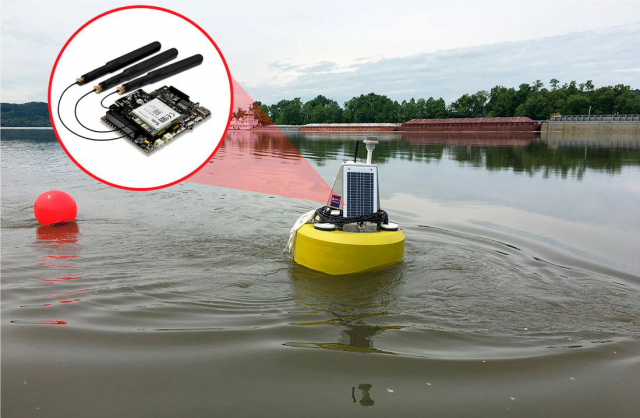Smart Water Project Helps Preserve Freshwater Mussels
Published on by Water Network Research, Official research team of The Water Network in Technology
Real-time monitoring of endangered freshwater mussels in the Ohio River is helping the US Army Corps of Engineers to protect the shellfish during dredging.

Terralytix Edge Buoy deployed in the Ohio river, powered by Waspmote IoT Core, Image source: Internet of Business
The Ohio River is the largest tributary, by volume, of the Mississippi River. Running westward from Pittsburgh, Pennsylvania to Cairo, Illinois, the river is home to various species of freshwater mussels. These mussels not only provide a crucial food source for the muskrats, waterfowl and fish that inhabit the river, but also provide important water-quality indicators.
Given the capacity of bivalves such as clams and mussels to clean up chemicals, control nutrients and restrict the build-up of algae, as highlighted in a recent Stanford University research report, any reduction in the Ohio River freshwater mussel population could presumably have a detrimental effect on the quality of its water.
Wizard, a joint development from Aridea and Libelium, stands for Water Intrinsic Zoological Ambient Research Device. The platform connects sensors to Aridea’s Terralytix Edge Buoy, a solar-powered communications buoy that integrates Libelium’s Waspmote Sensor Platform to record and send data, such as water depth and quality, conductivity, pH, turbidity and dissolved oxygen levels.
The buoy is also equipped with a Transducer Array from high-frequency acoustic instrumentation company, SeaTek, to monitor the build-up and depth of any sediment through an ultrasonic ranging system.
All of the data generated is sent directly from the Waspmote Sensor Platform to Aridea’s Terralytix Portal at five-minute intervals via a 4G connection. From here, members of the US Army Corps can collect and aggregate the data using a single interface.
Read full article: Internet of Business
Media
Taxonomy
- Technology
- Sensor Systems
- Ecosystem Management
- River Studies
- Ecosystem Management
- River Engineering
- River Restoration
- Sensors